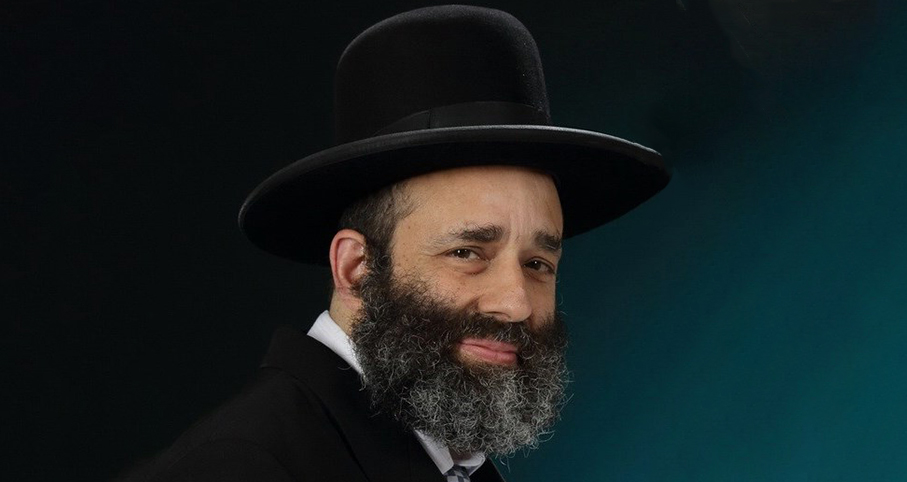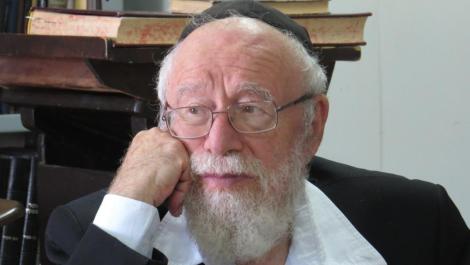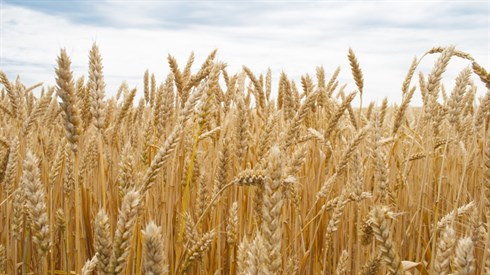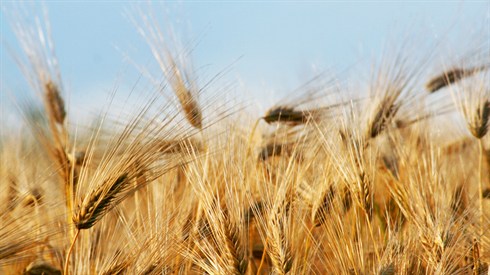- Shabbat and Holidays
- The Month of Nissan
4
Since Chodesh Nissan is arriving, we will discuss birkas ilanos, the special bracha that Chazal instituted to be recited when observing trees in bloom. As an introduction, I note the words of the Aruch Hashulchan about this bracha, "The observance of reciting this bracha is weak among the common people. Furthermore, the Bedek Habayis (notes that Rav Yosef Karo, himself, added afterward to his Beis Yosef commentary) writes that the custom is not to recite this bracha. However, all talmidei chachamim and G-d-fearing people are meticulous about observing this bracha."
Introduction:
The Gemara that provides the source of this bracha is extremely brief and in an unusual location. Whereas other similar brochos recited upon items that one sees are discussed in the last chapter of mesechta Brochos, birkas ilanos is discussed in the sixth chapter of Brochos, which is the source for the brochos recited before eating and drinking. In the midst of a discussion of the brochos on fragrances, the Gemara inserts the following passage:
Rav Yehudah said, "Someone who goes out during the days of Nissan and sees trees that are blooming, says ‘Blessed (is Hashem, our G-d, King of the universe) Who did not leave anything lacking in His universe, and He created good creations and good trees so that mankind can have pleasure from them’" (Brochos 43b).
As we will soon see, although the Gemara mentions only the first word of the bracha, Boruch, it means that we should recite a full bracha. The Gemara then resumes its discussion on fragrances, without any further mention of birkas ilanos.
The wording of the Tur and the Shulchan Aruch (Orach Chayim 226) is remarkably and unusually similar to that of the Gemara. To quote the Shulchan Aruch: "Someone who goes out during the days of Nissan and sees trees that are blossoming, recites, ‘Blessed is Hashem, our G-d, King of the universe, Who did not leave anything lacking in His universe, and He created good creations and good trees so that mankind can have pleasure from them.’ This bracha is recited only once each year, and if he waited until after the fruits are grown, he should no longer recite it." (See also Mishnah Berurah 225:12.) The wording of the bracha as quoted in Shulchan Aruch is Boruch Attah Hashem Elokeinu Melech ha’olam shelo chisar be’olamo kelum, uvara bo beriyos tovos ve’ilanos tovos leihanos beham benei adam.
It is surprising that there is very little Mishnah Berurah on this halacha, and no Biur Halacha at all, but there is much discussion on this bracha in the writings of other halachic authorities, such as the Kaf Hachayim, who lived shortly after the Mishnah Berurah.
Required?
The wording of the Gemara implies that there is no requirement to look for a blooming tree – if you happen to notice one, you should recite a bracha. This sounds similar to the bracha we recite upon hearing thunder, seeing lightning or a rainbow, or seeing something very unusual. There is no requirement to look for them, but a bracha praising Hashem is recited when you see any of these natural phenomena. This is as opposed to the bracha on kiddush levanah, which is a requirement. Perhaps this explains why the common people were not so concerned about reciting birkas ilanos, as the Aruch Hashulchan reports.
However, notwithstanding this point, the sifrei kabbalah assume that this mitzvah is an obligation, or, at least, a very important bracha to recite. The fact that this bracha assumes a greater role in kabbalistic sources than in halachic sources may explain another phenomenon that I will discuss shortly.
Season or date?
Reading the Gemara carefully, we should ask several questions. For example, the words of the Gemara say that you should recite this bracha "in the days of Nissan." If this means during the month of Nissan, then the Gemara should say "the month of Nissan," not the "days of Nissan," which implies that the season is important. On the other hand, if the season is the most important factor, then the Gemara should have said, "in the spring," and not mentioned Nissan at all.
This question results in a dispute among halachic authorities. The Birkei Yosef writes that it is preferred to wait until Nissan to recite birkas ilanos. On the other hand, the Mishnah Berurah rules that the Gemara mentions Nissan only because it was written in a place where fruits usually began blossoming then, but that you should recite the bracha whenever you first see trees blossom in your climate and place. Thus, the Mishnah Berurah rules that you should recite it whenever you see the first blossoms, and the Aruch Hashulchan, who also lived in a cold climate, notes that, where he lived, the bracha was usually not recited until Iyar or even Sivan, when it finally became warm enough for fruit trees to blossom. The Kaf Hachayim quotes several sources who contend that this bracha should not be recited before Nissan. Specifically, he quotes authorities who rule that birkas ilanos should not be recited when seeing the blossoming of almonds, which bloom well before Nissan; the same is true of the loquat, called shesek in Modern Hebrew, which also blossoms in the middle of the winter.
The conclusion of most authorities is that it is preferred to wait until Nissan in order to recite the bracha according to all opinions, but not required. Based on the conclusion of these authorities, we can answer one of our opening questions:
"Must I recite this bracha in the month of Nissan? I live in Australia!"
Australia, South Africa and most of South America are located in the southern hemisphere, where the month of Nissan is in the fall and Tishrei occurs in the spring. The answer to the question is that you can recite the bracha of birkas ilanos in whatever season fruits blossom, in your climate. If you live in a place where there are blossoming trees readily available in the month of Nissan, but some trees already blossom earlier, there are authorities who suggest waiting until Nissan to recite the bracha.
One or more?
The Gemara states that birkas ilanos is recited when a person sees "trees." Does he recite this bracha if he sees only one blossoming tree?
The Birkei Yosef mentions that there must be at least two blossoming trees, and this is quoted subsequently by the Kaf Hachayim. However, I note that the Mishnah Berurah does not quote this halacha, although he had ready access to the Birkei Yosef and quotes him innumerable times in the context of many other laws.
Among those who require that there be at least two trees, the Kaf Hachayim mentions that there is no requirement that there be trees of more than one species.
Two date palms
While researching materials for this article, I found the following curious question, raised by Rav Yitzchok Zylberstein, son-in-law of Rav Elyashiv and a well-respected rav in Bnei Brak.
"Do you recite birkas ilanos if you see two date palms?"
What is the question? The Gemara (Pesachim 111a) rules, ha’oveir bein shenei dekalim damo berosho venischayov benafsho, "someone who walks between two palm trees, his blood is on his head and he is obligated for the damage that he will bring upon himself." Rashi and the Rashbam there explain that the concern is because of ruach ra’ah.
A question regarding birkas ilanos is that since the wording of the bracha states "for mankind to benefit," perhaps it should not be recited over two palm trees, since this might be harmful for someone who walks between them. The case in question was when there is a path running between the two trees that individuals walk through. Rav Yitzchok Zylberstein suggests that, since the halacha is that you may recite this bracha when you see only one tree, and one palm is not dangerous, you may recite it. Then he asks that since the two trees together are dangerous, one of them should be removed, so that they not continue to present a hazard to people walking between them. Since we are not sure which tree will ultimately be removed, perhaps you cannot recite the bracha!
We should note that this question is probably theoretical. Dates do not usually blossom until late in the season, and, since are other fruit trees that blossom much earlier. Someone concerned about reciting the bracha would have recited it already -- unless he lives in an area where there are few other species of trees that blossom.
As many as possible?
Some authorities quote that, according to kabbalah, you should try to recite this bracha in a place where there are as many trees as possible. I have been told that even among those who do practice according to the kabbalah, most do not follow this approach. There are also opinions quoted that you should not recite this bracha while in the city, but should go outside the city (Kaf Hachayim quoting Rav Chayim Palagi). I personally do not know of anyone who observes the bracha this way. Again, Mishnah Berurah does not mention this.
Many Sefardim make it a lengthy procedure, including going as a group. They recite several chapters of Tehillim, then an extensive lesheim yichud, some other kabbalistic prayers, and a tefillah that our bracha should be valued as if we had all the deep kabbalistic ideas that are included in this bracha that Chazal implemented. They also recite the verses of Ve’yitein lecha and Vihi noam (recited on Motza’ei Shabbos), before making the birkas ilanos (Kaf Hachayim). After reciting birkas ilanos in a very loud voice, each person sets aside three coins for tzedakah. They then recite several more chapters of Tehillim, a tefillah that is taken from the middle of the musaf shemoneh esrei of Yom Tov, a tefillah that moshiach come, and the part of the Zohar that begins with the words Patach Eliyahu that many Sefardim recite daily before davening mincha. They conclude the procedure with the passage that begins with the words Rabbi Chananya ben Akavyah omer, and then recite a kaddish derabbanan. This is the procedure that I saw followed in the Kaf Hachayim. In the Sefardic siddurim that I examined, I found similar procedures. All of this means that it is a far more elaborate procedure than that followed by Ashkenazim, who simply recite the bracha without any fanfare.
Edible fruits?
There is no mention in the Gemara that the bracha is recited only if the tree bears edible fruit. However, this halacha could perhaps be inferred from the wording of the bracha, since it implies that mankind receives some direct pleasure from this tree, which is the case when people will enjoy eating its fruit. The halachic conclusion of the late authorities is that it should be recited on a tree whose fruit is edible (Be’er Heiteiv, Mishnah Berurah, Kaf Hachayim).
How many species?
Do we recite this bracha for each species that we see blossoming, just as we recite a bracha for each species of new fruit we observe or eat in the course of the year, or is this bracha recited only once each year? The Mordechai, a rishon, implies that this bracha is recited only once each year, and when the Mishnah Berurah discusses this question, he reaches the same conclusion.
Missed first time?
If someone did not recite birkas ilanos the first time he saw a blossoming tree, can he still recite the bracha the next time he sees one? The halachic conclusion of the Mishnah Berurah is that he can still recite the bracha, even if the blossom has already developed into a fruit, as long as the fruit is not fully grown.
Shabbos or Yom Tov
The prevalent custom is not to recite this bracha on Shabbos or Yom Tov, although the Mishnah Berurah makes no mention of such a rule. The Kaf Hachayim does, prohibiting it because of a gezeirah that you might pull off leaves or flowers. He also mentions that there are kabbalistic reasons not to recite this bracha on Shabbos or Yom Tov.
Prohibited fruit
Can you recite this bracha on a tree planted (or transplanted) within the previous three years, whose fruit, when it grows, will be prohibited because of orlah? The Kaf Hachayim rules that you should not. The reason is, presumably, because the wording of the bracha is that these blossoms are for mankind to benefit from, and any benefit from the fruit of this particular tree is prohibited. Nevertheless, I note that the Mishnah Berurah does not mention anything about this ruling.
Grafted trees
Can you recite birkas ilanos on a grafted tree? Several late authorities discuss whether you can recite this bracha for a tree that is grafted from different species, such that it would be forbidden for a Jew to graft these trees. (The fruit of this tree may be eaten, so this is a different question from the previous one, regarding a tree producing orlah fruits.)
There is a dispute among earlier acharonim regarding whether you can recite a shehecheyanu on a fruit from a tree that was grafted. Quoting the Halachos Ketanos (1:60) as his source, the Be’er Heiteiv (Orach Chayim 225:7) rules that you cannot recite shehecheyanu on a fruit from a grafted tree. However, the She’eilas Yaavetz (#63) disagrees and rules that you may. Among later authorities, several discuss how we rule between these authorities. Biur Halacha 225:3 s. v. Peri quotes both opinions, but implies, slightly, that the bracha can be recited. (See also Shu"t Igros Moshe, Orach Chayim 2:58.) Shu"t Minchas Yitzchak 3:25 concludes that it is better to find something else on which to recite the shehecheyanu.
Regarding birkas ilanos, I found one responsum among the late halachic authorities, which concluded that it is preferred not to recite the bracha on a tree grafted in a way that would violate halacha (Shu"t Minchas Yitzchak 3:25). This case is actually quite common, since most fruit trees today are grafted, and frequently from one species onto another. There is an article on this subject on RabbiKaganoff.com
From a passing vehicle
If you see the blossoming tree while you are in a passing vehicle, can you recite the bracha? Rav Yitzchok Zylberstein, whom we quoted above, discusses this question. He compares it to a Biur Halacha (218:1 s. v. Bimkom), which is based on the law regarding the bracha recited upon hearing thunder (Shulchan Aruch Orach Chayim 227:3). The Biur Halacha concludes that you can recite the bracha on a place where a miracle occurred only as long as you see the place. Rav Zylberstein adds that the Shulchan Aruch rules that you can recite the bracha for thunder, as long as it is within the period of time of toch kedei dibbur, enough time either to say shalom alecha rebbe, or shalom alecha rebbe umori (this is a dispute among halachic authorities), which is only a few seconds after you heard the thunder. The same halacha, concludes Rav Zylberstein, should be true regarding someone who sees the blossoming trees while traveling – if it is within a few seconds, he may still recite birkas ilanos, but if more time has elapsed since he saw the blossoms, he may not (Chashukei Chemed, Pesachim 111a).
Ripping up a tree
Rav Zylberstein has another teshuvah about the following question: An ailing father wants desperately to recite birkas ilanos, but cannot physically be taken outdoors to see a tree. Is it permitted to rip up a blossoming tree by its roots and bring it to the ill man, so that he may recite the bracha? Since this question is not about birkas ilanos, but about the issue of bal tashchis (destroying fruit trees), we will not discuss it in this article.
Conclusion
In a monumental essay, Rav Hirsch (Bereishis 8:21) explains that the expression rei’ach nicho’ach that we find in the context of korbanos, usually translated as "a pleasant fragrance," should more accurately be rendered "an expression of compliance." He demonstrates that the word nicho’ach means "giving satisfaction" and the concept of "rei’ach" is used, because fragrance implies receiving a very slight impression of something that is distant. Thus, when a korban is offered as a rei’ach nicho’ach, it means that it shows a small expression of our fulfilling Hashem’s will.
Similarly, the concept of birkas ilanos is that we thank Hashem, not only for the essential things in life, but also for the extras – the things that we can live without, but that Hashem gave us as extra pleasures. Fruits are usually not essential for life, but make our sojourn through earth a bit more pleasurable. And for that also, we must be sure to thank Hashem.
This Shiur is published also at Rabbi Kaganof's site

Double Wrapping Food in a Treif Oven
Rabbi Daniel Mann | Kislev 4 5777

Why is Hafrashat Challah So Important
Rabbi Yosef Tzvi Rimon | 5778

The laws of Chodosh
Rabbi Yirmiyohu Kaganoff | Iyar 11 5779
Parshat Shemini
The Mishkan: Dedication, Anticipation, and Crisis
Rabbi Hillel Geffen | Nisan 5761

Refuting Criticism by the Ridbaz – #311 – part IV
Date and Place: 19 Sivan 5670 (1910), Yafo
Beit Din Eretz Hemda - Gazit | Nisan 5785
Daf Yomi Makkot Daf 11
R' Eli Stefansky | 21 Nisan 5785
Daf Yomi Makkot Daf 9
R' Eli Stefansky | 19 Nisan 5785






